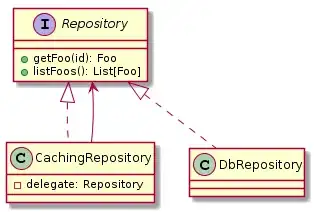I have gone back and forth on this issue several times.
On one hand, you could argue, a repository's single responsibility is to manage the persistent state of an entity, and the consuming application is the one that knows whether it will accept a stale value or not in exchange for performance.
However, if you are dealing with an out of process cache, and many different applications/servers all need that same cached value, putting the caching code in the repository is a convenient place for, and would help avoid cache duplication. Since there is, at that point a single cache acting as a single source of truth, and acting as a buffer for the DB, it seems more appropriate for a repository to contain caching code.
Does caching code belong in a repository?
What about specifically an out of process cache (such as redis) acting as a buffer to the database?
If caching code does not belong in a repository, where should it reside if many desperate pieces of code need that same value?
